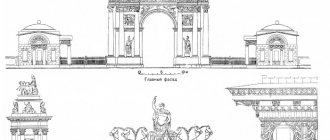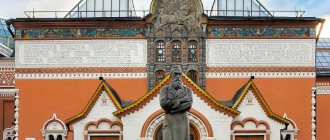We are in Telegram News
See prices for Air in the world!
Japan has many interesting cultural sites. Tourists flock to ancient temples and palaces, but lovers prefer to invite their significant other to a relatively modern sign. The Hachiko Monument has not yet celebrated its centenary. However, it is rightfully considered one of the symbols of the island country. Its importance is recognized by all loving hearts, regardless of who their deep feeling is directed at: a person of the opposite sex, a child or parents, the Motherland or some important cause.
History of Hachiko
The real Hachiko was born on November 10, 1923
Many people know about Hachiko from the film of the same name starring Richard Gere. But the true story of this faithful animal is somewhat different from the Hollywood hit.
The puppy was given to the house of university professor Hidesaburo Ueno, who at that time already had 7 other animals at home, so the puppy was named Hachiko, which means “eighth” in Japanese.
The dog became so attached to his owner that he got into the habit of accompanying him to the city to Shibuya station every day, and then, in the evening, faithfully waiting for his return in the same place.
But in 1925, disaster struck. The professor unexpectedly died of a heart attack. It happened right at work. However, Hati did not give up his hopes of waiting for his owner, so after his death he constantly came to his usual place at the station and waited.
Soon others learned about the dog's unusual devotion. Residents of the surrounding houses, sellers, and station workers paid attention to Hachiko. They tried to return the dog to relatives and place it in other owners, but the dog stubbornly returned to its original place. In 1932, a newspaper article was published about Hati.
Hachi died in 1935. The dog's remains were buried with his beloved owner. A year before, it was decided to erect a monument to the most faithful dog on the planet.
What does the monument look like?
Many visited the legendary monument, especially after watching the film “Hachiko: The Most Faithful Friend”
The first version of the pedestal was installed in 1934 at the exit of Shibuya Station. Hachi was personally present at this event. Unfortunately, the monument was melted down during World War II.
In 1948, it was decided to return this Tokyo landmark to its original location. The new version of the monument was slightly smaller than the original. An inconspicuous bronze dog is placed on a high pedestal with the inscription “Hachiko’s faithful dog.”
Symbol of Loyalty at Shibuya Station
The Hachiko Monument in Tokyo is today a popular place where lovers meet. And the very image of this dog in Japan is considered a symbol of selfless love and loyalty. In 1987, the film “The Story of Hachiko” was shot, and in 2009, a remake of it called “Hachiko: The Most Faithful Friend” was made.
Surely every city has such a traditional meeting place. The Hachiko Dog (a monument in Japan) is such a place. If you ask the Japanese where they most often go on dates, the answer will be unanimous – Hachiko.
Where is
If you suddenly find yourself in Tokyo and decide to find the Hachi Monument, then it will be easy to do. The pedestal is located near the Shibuya Station exit . You will probably notice a crowd of tourists around the pedestal wanting to take pictures of themselves with the legendary Hati.
The famous story about Hachiko's most devoted friend made millions of people around the world cry. But few people know that the main character of this drama really existed, and that a monument was erected in his honor.
Square near Shibuya Station in Tokyo
Shibuya is a large transport hub, where commuter trains, buses and the city subway converge. There are constant flows of people, a huge number of boutiques, restaurants and department stores. The square near the station is considered the most popular nightlife center. Among all this whirlwind, a low pedestal with a bronze image of a dog invariably attracts attention. The words “Hachiko’s faithful dog” are written on the pedestal.
Why was a monument erected to a dog named Hachiko?
It all started back in 1923. It was then, on November 10, that a puppy of the Akta breed was born. The puppy was given to a professor who worked at the University of Tokyo. It was this professor who gave the puppy the nickname Hachiko. Translated from Japanese, “hachiko” means “eighth”. The puppy earned this nickname for becoming the eighth dog in the professor’s life. The puppy grew up to be a very faithful and devoted dog: he always and everywhere followed his owner, accompanying him to work and meeting him from there. It's amazing that Hachiko came to Shibuya Station to meet the professor right on time!
In May 1923, a heart attack claims the life of Hachiko's owner, a professor named Hidesaburo Ueno. This is where the test of time begins. The dog was only 18 months old at that time, and he continued to meet and wait for his beloved owner at the same station. Day after day, Hachiko came there, waiting for the professor. The dog lay at the station from early evening until late twilight. The dog went to spend the night on the porch of the professor’s house, which was tightly locked, because there was no one to live in it.
When did Hachiko become known to the whole world?
In 1932, a newspaper was published in Japan in which an article was published entitled “The faithful dog has been waiting for his deceased owner for 7 years.” The Japanese and the whole world were then captivated by this sad story. People from all over the world began to come to Shibuya station, wanting to see with their own eyes a living example of a dog’s loyalty and devotion to humans.
Faithful Hachiko has been coming to Shibuya Station for 9 years! The devoted dog died on March 8, 1935. Veterinarians would later conclude that Hachiko's life was taken by cardiac filaria. They found a dead animal not far from the same Shibuya station. The news of the death of the faithful dog swept across Japan and throughout the world. National mourning was declared in the country. Hachiko's bones were buried next to the grave of his master Professor Ueno in a cemetery called Aoyama in Tokyo. After this, it was decided to make a stuffed animal from the dog’s skin, which to this day is located in the local science museum.
“And that’s it, the dog died”
In August 2021, Naidu was hit by a car near that very same stop - the second time in her life. After this, the dog was finally taken to animal rights activists - to. There she soon died in the arms of the same Tatyana Gromova, who “supervised” her for several years.
As Interfax wrote, the center’s employees explained that this happened more likely from old age than from the injuries received. Perhaps the stress associated with relocation during the renovation of the park, as well as the changes in her usual habitat, were not in vain.
“The dog Naida recently ended up at our shelter after being run over by a car. She was brought in with minor bruises; she was also diagnosed with kidney problems and bedsores; there were no infections. She lived for a week, refused food and drink, and died in the arms of the woman who supervised her,” Zoospas representatives told reporters.
The news was actively discussed in the city. At the same time, opinions were divided: some blamed the Spetsavtokhozyaistva nursery, others blamed it.
Model of the monument to Naida, artist Igor Rutter
“I am sure that if the zoo rescue had not taken the dog for the sake of his PR, she would have been alive and well. Well, I would have limped a little more. It’s generally not clear, the dog lived for 12 years, a zoo rescue appeared on the horizon, and that’s all. The dog died. “, they wrote on one of the city forums (the author’s spelling and punctuation have been preserved. - iz.ru).
Some of the Internet users even said that the city authorities and corruption were to blame for everything: they say, while they were using money for the square, they killed the dog. But, most likely, Naida actually died of old age. And, as some city residents noted, her life in the end was not the worst possible for a homeless animal.
A dog named Hachiko
Back in 1923, in Akita Prefecture, Japan, a farmer’s dog gave birth to Akita Inu puppies. This farmer once studied at the Agricultural Academy in Tokyo and decided to give one of the puppies to Professor Hidesaburo Ueno, who was his teacher. Professor Ueno loved dogs very much, and the puppy given to him became the eighth in a row, which was the beginning of the name of the new pet. Hachi means eight in Japanese and ko means affection or dependence.
The dog turned out to be unusually smart and became a loyal friend to his owner. Professor Ueno went to teach at the university every day, and Hachiko accompanied him to the railway station, which is now called Shibuya (Shibuya). It is still unknown how Hachiko determined the exact time of the professor’s return from the university, but at exactly three o’clock in the afternoon the dog came to meet his owner. Station workers and regular passengers have already become accustomed to it.
Death of the Professor
But one day, on May 21, 1925, the professor had a heart attack right at the university. The doctors were unable to help, and Ueno died. Hachiko, as usual, came to the station to see the owner , but he never returned. At that time the dog was 18 months old.
Relatives and friends of Professor Ueno tried to find a new owner for Hachiko, but the dog stubbornly came to the station at three o'clock and waited for his friend. The dog waited for the professor until the last train, and then returned to the house where he lived to spend the night on the porch.
People who saw the exhausted Hachiko waiting for Professor Ueno began to feed him, and the station workers made sure that no one could offend the dog. Over time, news of this dog spread throughout Tokyo, and in 1932, several city newspapers published an article about Hachiko. In it they said that the dog had been coming to meet the professor for seven whole years. Hachiko became very famous, and many people specially came to Shibuya Station to see this devoted friend.
On March 8, 1935, Hachiko died of cancer and was found near the Shibuya train station. After the death of the dog, mourning was declared in the country. The dog's bones were buried next to Professor Ueno's grave at Tokyo's Aoyama Cemetery. And from the skin they made a stuffed animal, which today is in the Tokyo National Museum of Science.
Saint Bernard Barry
In the Alps there is a pass called Saint Bernard. In the Middle Ages, a road was built here that connected the north of Italy and the countries of Central Europe. The road was difficult to pass not only because it was laid at an altitude of about 2 thousand 500 meters above sea level, but also because of the unpredictable changeability of weather conditions. On a calm, sunny day, a storm could suddenly begin here, a strong wind could arise, so travelers caught on the road died.
In the middle of the 10th century, the Saint-Bernard monastery was built on the pass in honor of Saint Bernard of Menton (a city in the south of France). The monks helped travelers crossing the pass and gave them accommodation for the night in a hotel at the monastery. By the beginning of the 13th century, the monks managed to breed a very large and powerful breed of dogs, which was distinguished by a high level of intelligence. The breed was named St. Bernard.
Since these dogs had long and thick hair, they were not afraid of:
Thanks to their well-developed sense of smell, St. Bernards looked for people who were covered in snow, or those who lost their way and got lost. Among the dogs of this breed there were celebrities. For example, a dog named Leo was able to save 35 people. And a monument was erected to the dog Barry, who saved 40 people.
Monument in Paris
In Paris in 1899, a monument to the famous dog named Barry was erected. A large St. Bernard dog stands on a stone pedestal, and a small child clings to him. On the pedestal of the monument there is an inscription carved: “Barry, who saved forty people and was killed forty first.” This monument has a very interesting history.
Once a very strong storm raged, all the dogs that went out to search for people caught in bad weather returned exhausted to the monastery. Only Barry continued his search among the snow-capped mountains and still found one person covered in snow. The dog dug him up and began licking his frozen face.
Opening his eyes, the rescued man saw Barry in front of him and, in fear, mistook him for a wolf. Taking out a pistol (according to another version, a knife), he killed the dog. This was the same forty-first, which is written about on the pedestal of the monument. Barry's body was transported with honors to Paris and buried in a special dog cemetery.
The End of Barry - version two
But there is a second version, which says that Barry was not actually killed. The last one saved was a child. No one knows how the child ended up alone on the pass, but the dog found the baby and, having dug it out, lay down next to him to warm him with its warmth. Barry licked the child's face for a long time, and the boy regained consciousness. Since the rescued man was exhausted, he could not walk and only grabbed Barry by the neck. Despite the fact that it was difficult for the old dog to drag the boy, he coped with his task and brought the child to the monastery .
Barry saved people for 20 years and died of his own death. Today it is impossible to say which version of the dog’s death is correct, but, in fact, it is not that important. The main thing is that Barry himself and the rest of the St. Bernards were rescuers of people in the mountains, and also faithfully served their masters. In gratitude to all the St. Bernard rescuers, a monument was erected in Paris.
Monuments to dogs in Russia
On the territory of Russia there are a large number of monuments dedicated to four-legged friends. Man pays tribute to his smaller brothers for their loyalty, and in many cases, the heroism that is characteristic of these beautiful creatures. So, there is a “dog” Monument of Loyalty.
Monuments to such dogs as:
- Dog astronaut.
- Demoman.
- Pavlov's dog.
- Service.
- Sanitary.
Laika
In Moscow in 1957, at the Institute of Military Medicine, preparations were underway for the first living creature to fly into space for the first time . This creature was the world famous mongrel dog named Laika. After successful preparation, she was sent into space. Unfortunately, she did not return to Earth and died after several hours in space. Thanks to Laika, scientists were able to find out how space overloads and weightlessness affect humans. In 2008, a one-to-one scale monument to Laika was unveiled in the institute’s courtyard. This heroic dog, having completed its flight, helped man in space exploration.
Monument to Greyfriars Bobby (England, Scotland)
In Scotland, Edinburgh, there is a wonderful monument to a dog named Bobby; it has become not only a local, but a world landmark. The monument was erected in 1873, the author of the sculpture is William Brodie.
The extraordinary loyalty of the Skye terrier Bobby still inspires admiration. The dog lived for two years with his owner John Gray, who served as a night guard for the Edinburgh City Police. Unfortunately, the dog's happiness did not last long; John died after contracting tuberculosis on February 15, 1858.
For 14 years, faithful Bobby, until his death on January 14, 1872, carried out constant service at the grave of his beloved master John. Baroness Angela Burdett-Coutts, like many residents of the city, were delighted with the loyalty of the dog Bobby. A year after the dog went to the rainbow, the Baroness ordered the construction of a statue and fountain in honor of the faithful Bobby.
This wonderful woman spent her entire life fighting callous and cruel treatment of children and animals. The Encyclopedia Britannica writes that King Edward the Seventh said of her: “The most remarkable woman in the kingdom after my mother.”
History of Russian Hachiko
Everything happened in the city of Togliatti, Samara region, on the Southern Highway. In 1995, local residents noticed a German shepherd on the side of the road. The dog was always in the same place and rushed after passing cars. The rumor about the dog's unusual behavior spread very quickly, and some people became more interested in the case.
Later it was found out that in the summer of 1995, not far from the place where the dog was constantly located, a serious car accident occurred. Inside one of the cars was the same dog with his owners. As a result of the car accident, everyone died except him. No one knew what the dog’s name was; people began to call him Kostik or Verny .
Many times different people wanted to take the dog home, but the dog refused to leave his place. Even if he went somewhere, he would certainly come back. Sympathetic people built a kennel and constantly fed the dog. And the dog was waiting for its owners at any time of the year - in snow, wind and rain. In 2002, she died; she was found not far from the waiting area in a forest belt. Faithful waited for his owners until the last minute of his life.
Monument to the dog Jock (Poland, Krakow)
The monument to the dog Jock, created by sculptor Bronislaw Chromy, was unveiled on May 26, 2001 in Krakow. It is located near the Grunwald Bridge on Chervensky Boulevard.
Jock was an ordinary black mongrel, cute and loyal. He loved his owner very much, who unexpectedly died on the street as a result of a heart attack in 1990. It happened near the Grunwald roundabout. The dog never left this place after the death of its owner. The dog lived at the crossroads for a whole year. Local residents fed him. Finally, a kind person was found whom Jock trusted. It was Maria Muller, she took the dog to her home. However, Jock was unlucky again. The owner died seven years later in 1998. The dog was in shock, he ran away from the house and was hit by a train.
The local Society for the Protection and Prevention of Cruelty to Animals helped erect a monument to this wonderful dog with a difficult life and an unusually loyal character.











